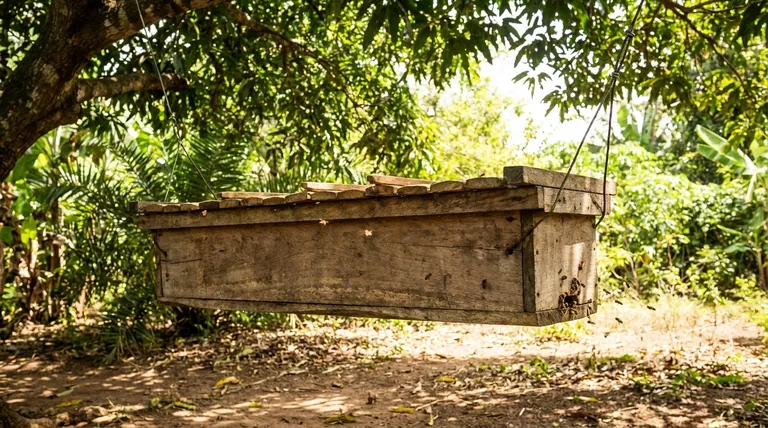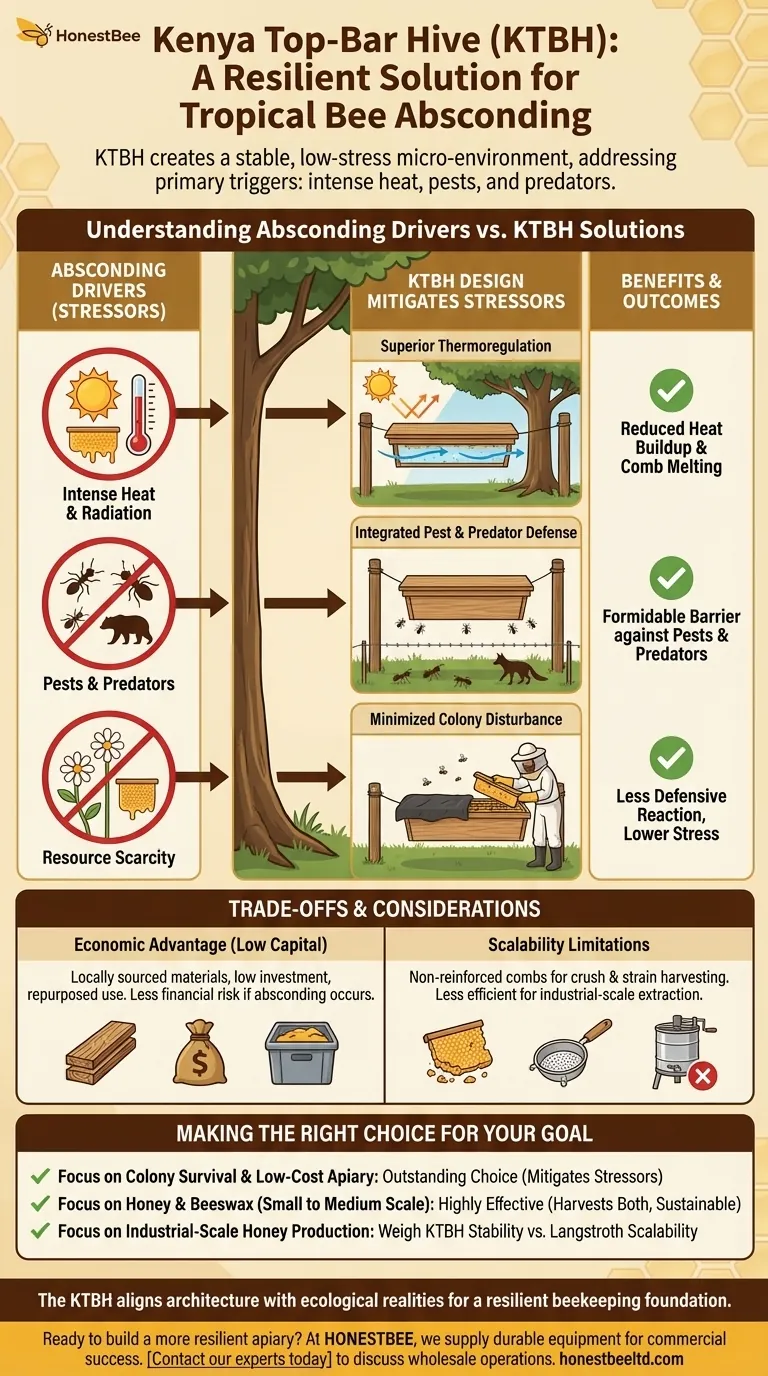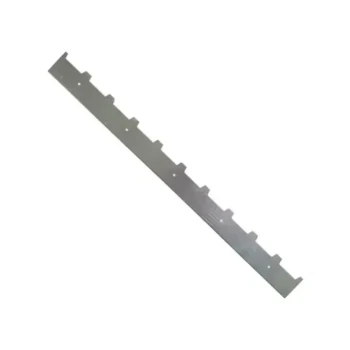The Kenya Top-Bar Hive (KTBH) directly counters bee absconding by creating a more stable and less stressful micro-environment for the colony. Its design offers superior protection from the primary triggers of absconding in tropical regions: intense heat, persistent pests, and predators. By fundamentally reducing these environmental pressures, the hive encourages bees to remain in place, even during difficult periods.
Absconding in tropical climates is a survival strategy for bees, not a flaw. The KTBH succeeds by addressing the root causes of this survival instinct—environmental stress and disturbance—making it a pragmatic and resilient system for beekeepers in challenging regions.

Understanding the Drivers of Absconding
To appreciate the KTBH's effectiveness, we must first understand why bee colonies abscond. Absconding is the complete abandonment of a hive by the queen and the entire colony. It is a deliberate response to untenable living conditions.
The Role of Environmental Stress
In tropical regions, key stressors include intense solar radiation, which can overheat the hive and melt combs. The constant threat from pests like ants and larger predators also puts a colony on a permanent defensive footing, draining its resources and energy.
The Impact of Resource Scarcity
Periods of nectar dearth (a lack of flowering plants) are common in many tropical climates. When a colony faces starvation combined with other environmental stressors, its instinct is to abandon the location in search of a better one.
How the KTBH Design Mitigates Key Stressors
The KTBH is not a single invention but a system of features that work together to create a more hospitable home for bees. Its design choices are direct solutions to the problems outlined above.
Superior Thermoregulation
The long, horizontal layout of the KTBH presents a smaller surface area to the overhead sun compared to a tall, multi-box Langstroth hive. This design, combined with the common practice of placing the hive under the shade of a tree, significantly reduces internal heat buildup and prevents the colony from overheating.
Integrated Pest and Predator Defense
A defining feature of KTBH management is hanging the hive off the ground from a wire or posts. This simple act creates a formidable barrier against ground-based pests, most notably ants, which can quickly overwhelm a colony. It also keeps the hive out of reach of many larger predators.
Minimized Colony Disturbance
The KTBH uses individual bars that the bees build their comb down from. During an inspection, the beekeeper removes only one bar at a time, leaving the vast majority of the colony covered, calm, and in the dark. This is a stark contrast to opening a Langstroth hive, which exposes the entire top of the colony to light and air, causing significant defensive reactions, especially with Africanized bees. Reduced disturbance means reduced stress.
Understanding the Trade-offs
No system is perfect. The KTBH's advantages in colony stability come with considerations for operational scale and honey processing.
The Economic Advantage of Low Capital Risk
KTBHs can be built from locally sourced, low-cost materials, dramatically reducing the financial barrier to entry for beekeepers. This low capital investment also mitigates the financial loss if a colony does abscond. An empty KTBH can even be repurposed for other uses, such as grain storage, ensuring the asset is not a total loss.
Limitations in Commercial Scalability
The natural, non-reinforced combs built in a KTBH cannot typically be put in a centrifugal extractor, as they will break. Honey is harvested by crushing and straining the comb, which is more labor-intensive and results in the loss of the drawn comb. This makes the KTBH less efficient for large-scale, commercial operations focused purely on maximizing honey output compared to the reusable, standardized frames of the Langstroth system.
Making the Right Choice for Your Goal
The decision to use a KTBH should be based on your specific objectives and environment.
- If your primary focus is colony survival and establishing a low-cost apiary in a tropical region: The KTBH is an outstanding choice because its design directly mitigates the environmental stressors that cause absconding.
- If your primary focus is producing both honey and beeswax on a small to medium scale: The KTBH is highly effective, as harvesting by crushing the comb yields both products and supports a sustainable beekeeping practice.
- If your primary focus is industrial-scale honey production with maximum efficiency: You must weigh the KTBH's stability benefits against the Langstroth system's advantages in standardized processing and scalability.
By aligning the hive's architecture with the ecological realities of its environment, the KTBH provides a remarkably resilient foundation for successful beekeeping.
Summary Table:
| KTBH Feature | Benefit Against Absconding |
|---|---|
| Long, Horizontal Design | Superior thermoregulation; reduces heat buildup from the sun. |
| Elevated Hanging System | Creates a barrier against ground-based pests like ants and predators. |
| Individual Top-Bar Inspection | Minimizes colony disturbance and stress during hive checks. |
| Low-Cost, Local Materials | Reduces financial risk and capital loss if a colony does abscond. |
Ready to build a more resilient apiary?
The Kenya Top-Bar Hive is a proven solution for beekeepers facing the challenge of absconding. At HONESTBEE, we supply the durable beekeeping supplies and equipment that commercial apiaries and distributors need to succeed.
We can help you source or build the right equipment for a stable, productive operation. Contact our experts today to discuss how our wholesale-focused operations can support your beekeeping goals in tropical regions.
Visual Guide

Related Products
- HONESTBEE Professional Hive Top Bee Feeder Feeding Solution
- Professional Engraved Round Hive Number Tags for Beekeeping
- Professional Hive Top Bee Feeder for Beekeeping
- HONESTBEE Advanced Ergonomic Stainless Steel Hive Tool for Beekeeping
- Telescopic Beehive Outer Cover Lid Roof with Galvanised Sheeting for Langstroth Hive and Beehive Outer Cover
People Also Ask
- What is the best way to top feed bees? A Safe, High-Volume Feeding Solution for Your Apiary
- How is the plywood floor fitted into the hive-top feeder? Ensure Longevity with a Floating Floor Design
- How do I keep bees from drowning in my top feeder? Ensure Safe Feeding for Your Hive
- Why is a top feeder essential for bees? Ensure Colony Health and Efficiency
- What is a top feeder for bees? Maximize Colony Health with Efficient Feeding



















